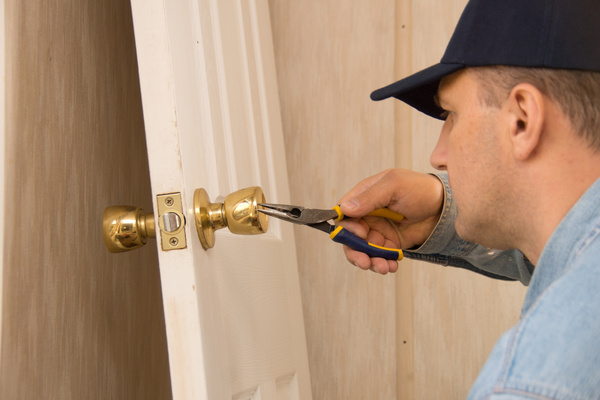Oftentimes, door lock problems are caused by a simple complication such as a faulty lock mechanism, which can easily be fixed. When not fixed at the right time, however, the same problem can lead to a completely broken lockset that needs to be replaced.
Sometimes, it is as simple as cleaning the door lock or lubricating it with graphite or even just fixing the way in which the door fits into its frame. Although there are problems that require handyman Gilbert AZ, in this article we’ll be focusing on how to fix the more common door lock problems that are easy to fix with a little know-how and simple tools.
Lock Doesn’t Latch
If the latch on your door refuses to click, then it’s probably a sign that it has been displaced from the strike plate. First, make sure that the hinge screws are tight and then shift the strike plate into place. Your door could require repositioning, or perhaps the latch just needs to be adjusted.
To find out which is which, start by slowly closing the door to see what happens when the strike plate and the latch bolt meet. If the bolt is situated on the side, below or even above the strike plate, then you’ll see marks in that particular area where the misaligned bolt has scratched it.
To fix the problem, file away the strike plate hole until the latch is able to fit perfectly into it. This usually works for a small misalignment that’s below 1/8-inch. For a misalignment that’s above 1/8-inches, you’ll have to take out the strike plate so that you can extend the mortise until it’s higher or lower, depending on your door’s requirements. Then, put the plate back on, use some wood putty to seal the cavity and refinish.
As an alternative, handyman Gilbert often advise placing an adjustable door strike instead of a strike plate or repositioning the door by taking out the hinges and shimming them out.
Loose Door Knob
It’s quite common for a doorknob to become loose after a few years or decades of use, and there are different tightening methods available to fix this problem, depending on the type of door you’re working with.
For example, you’d have to follow these steps in order to tighten up the basic mortise lockset of an interior door:
Undo the setscrew on the shank part of the knob.
Once it’s loosened, turn the knob in a clockwise motion until it’s secure, lock the screw into place, and check to make sure that it’s lying flush on the even side of the spindle. Now you should be able to turn the knob effortlessly.
If the above steps fail, take the knob out and inspect the spindle, because if it’s damaged then you’ll have to replace it. However, if the entire lockset is damaged then you’ll have to replace that too.
Slow or Frozen Door Lock
In some cases, the lock just freezes every time you try to open the door. This can be caused by dirt build-up inside the lock. If that’s the case, squeeze or sprinkle some graphite into the keyhole and then keep trying the lock to smear in the graphite fully.
handyman in Gilbert AZ also recommend de-icers for this problem, as they’re able to soften sticky dirt deposits inside the lock. If these solutions don’t work, then you may have to undo the lock in order to check if it has some broken or jammed mechanism inside. If that’s the case, then you’ll have to either straighten the affected component or replace it completely.
